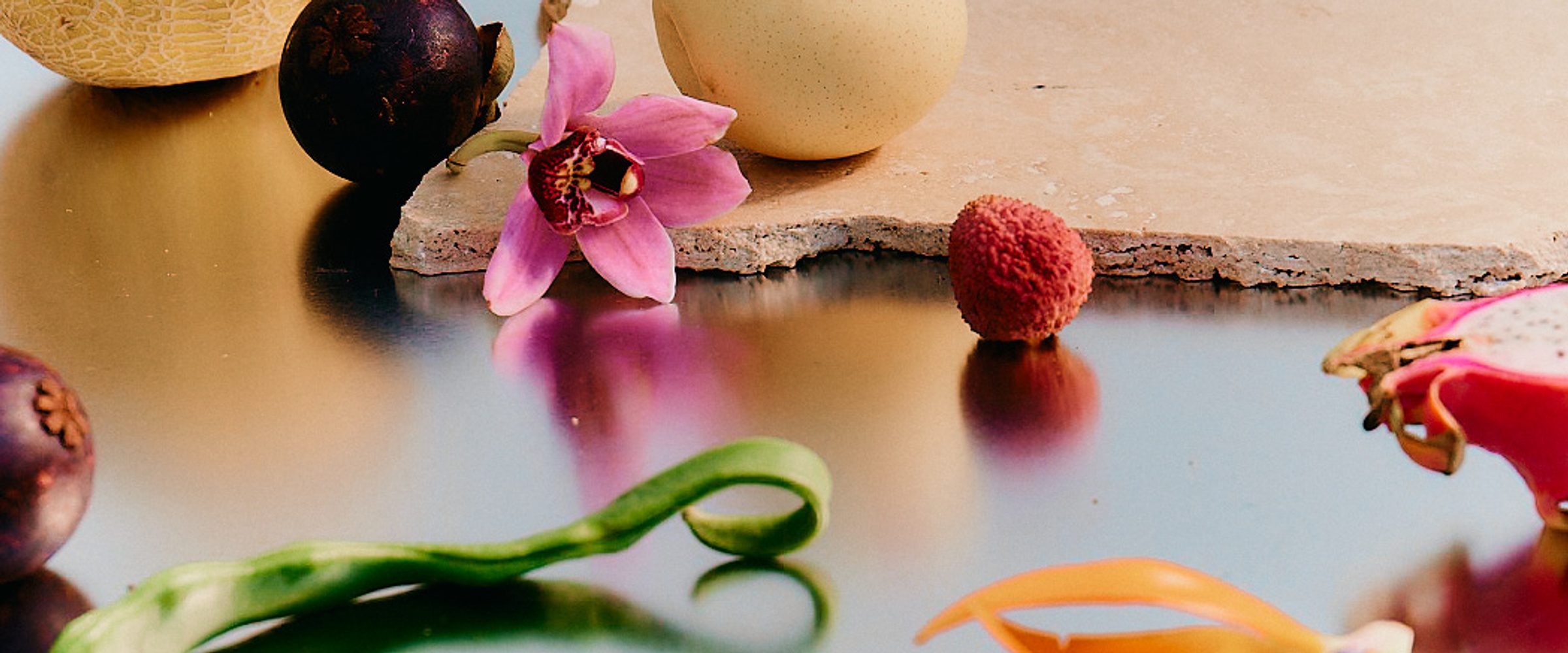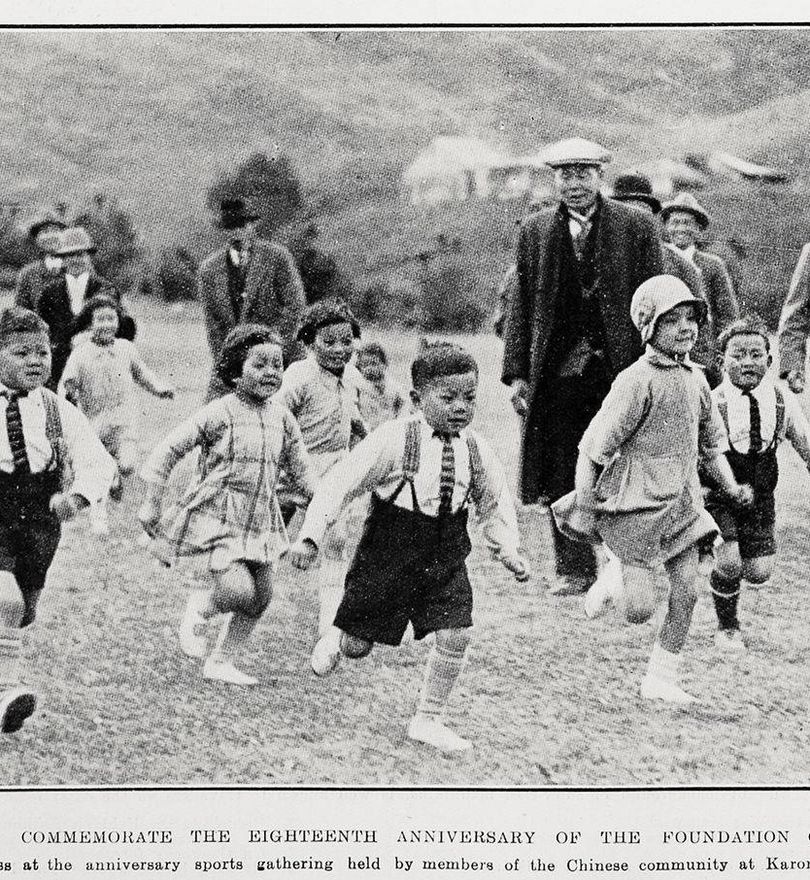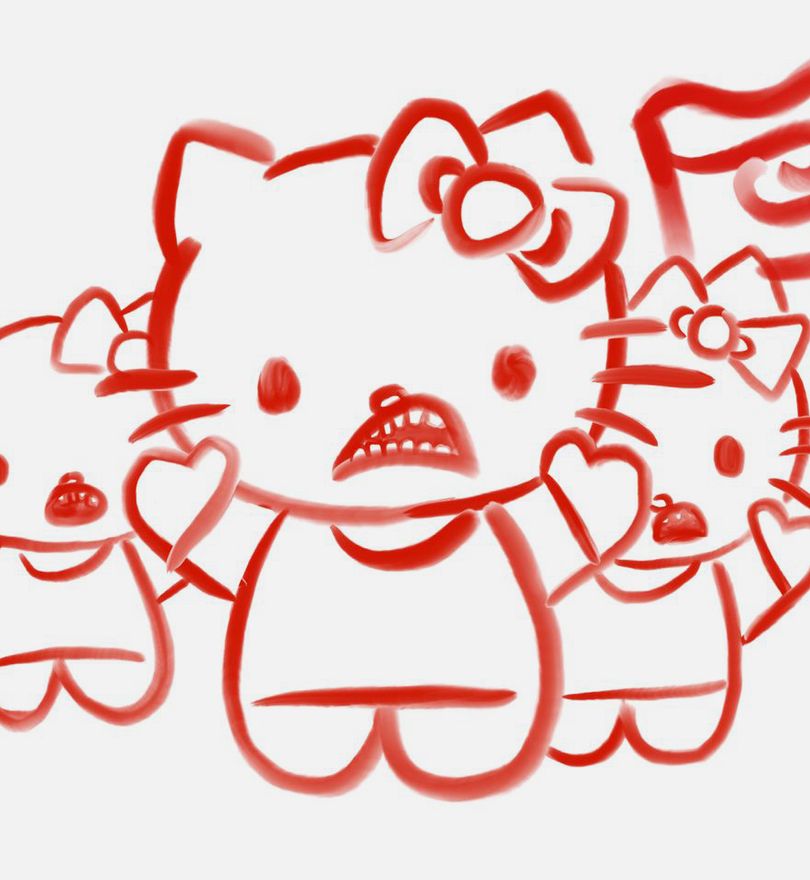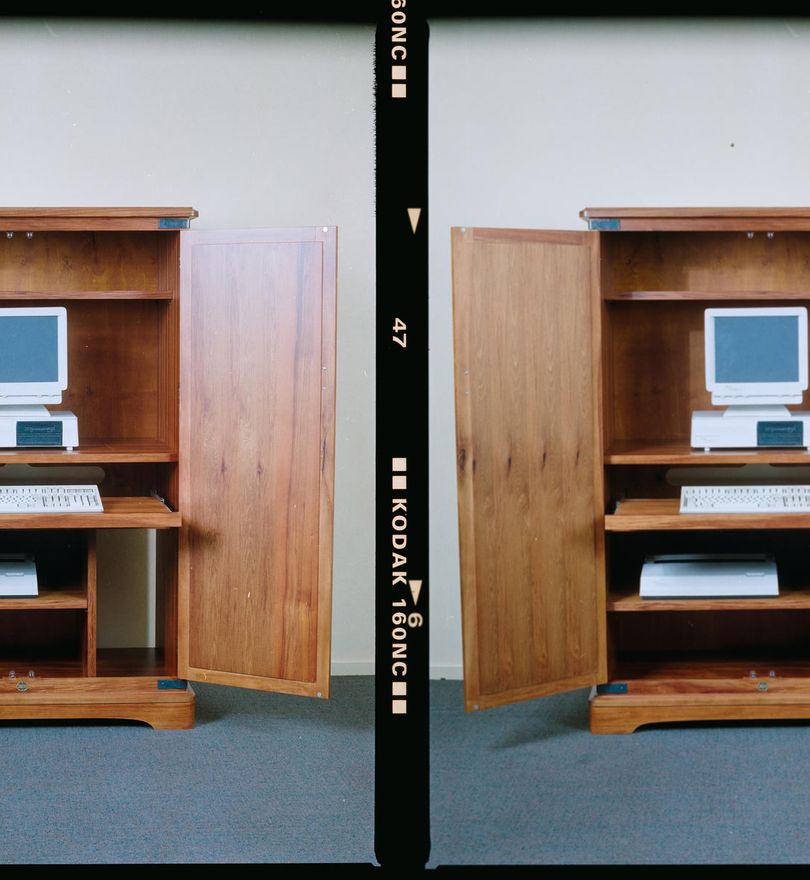
Highlights from our fledgling archive of Aotearoa Asian art, selected by the Satellites archivists.
The Satellites Archive is a growing record of Asian arts practice in Aotearoa. It’s a tribute to the people that make up our interconnected communities, and the ways they expand the cultural life of this place through their work.
For months, our team of archivists has been researching, talking to artists and writing entries to build this resource. Here, they share some of their favourite additions so far — each one a doorway, an escape hatch or a rabbit hole that will whisk you away to a different corner of the archive. We hope you enjoy getting lost in it.
Tim Wong — Writer, designer, filmmaker and Satellites archivist
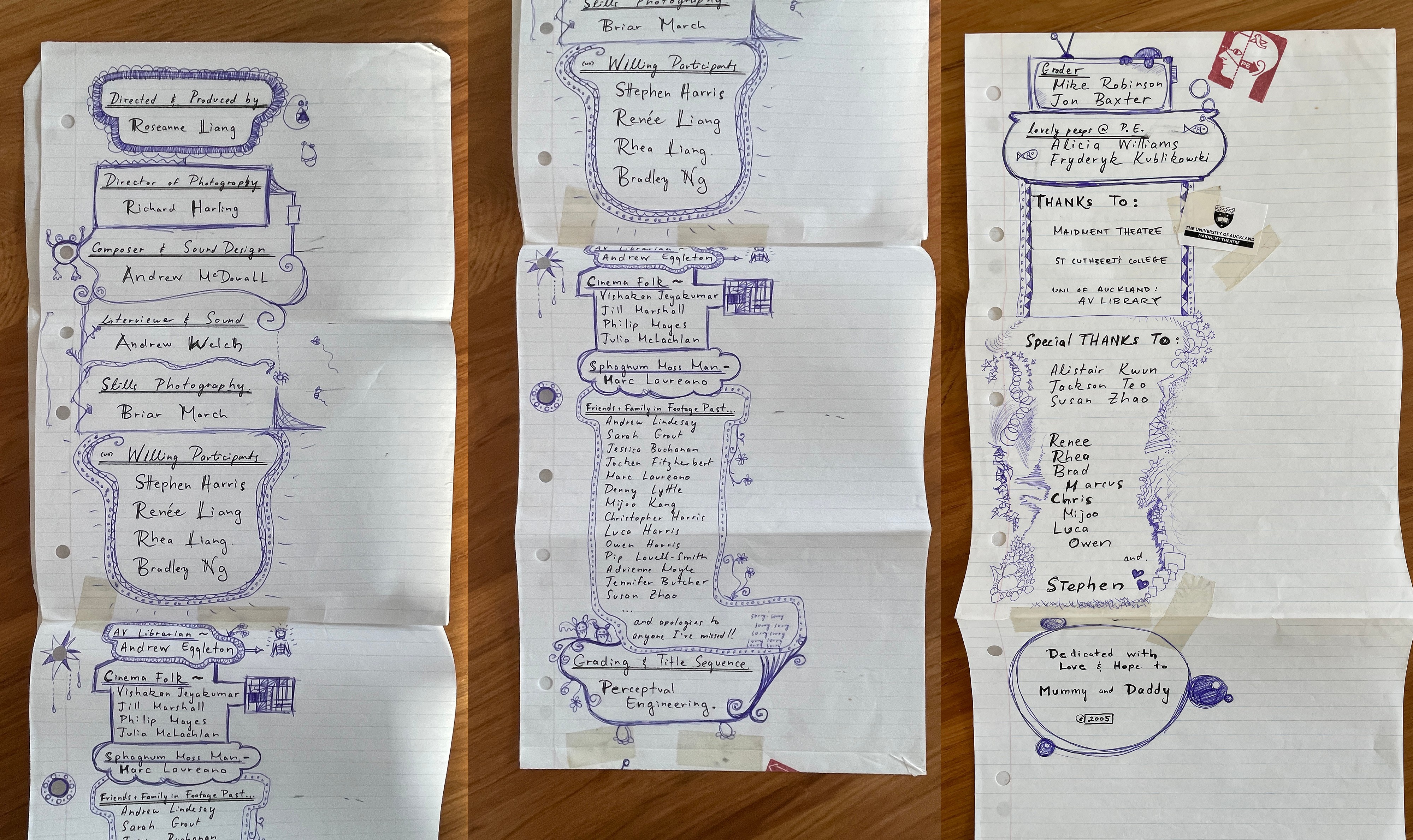
Roseanne Liang, credits for Banana in a Nutshell, 2005
'These hand-drawn credits by Roseanne Liang capture the hopeful, earnestly personal charm of her first feature, Banana in a Nutshell, a documentary made, in part, to win the favour of her conservative Chinese parents. You can almost picture her drawing them in her bedroom in her parents’ house — where she was still living at the time of the film’s making. The hand-drawn credits only appear in the original 55-minute cut; the updated epilogue version replaced them with credits formatted in a standard font.'
Dilohana Lekamge — Artist, curator, writer and Satellites archivist
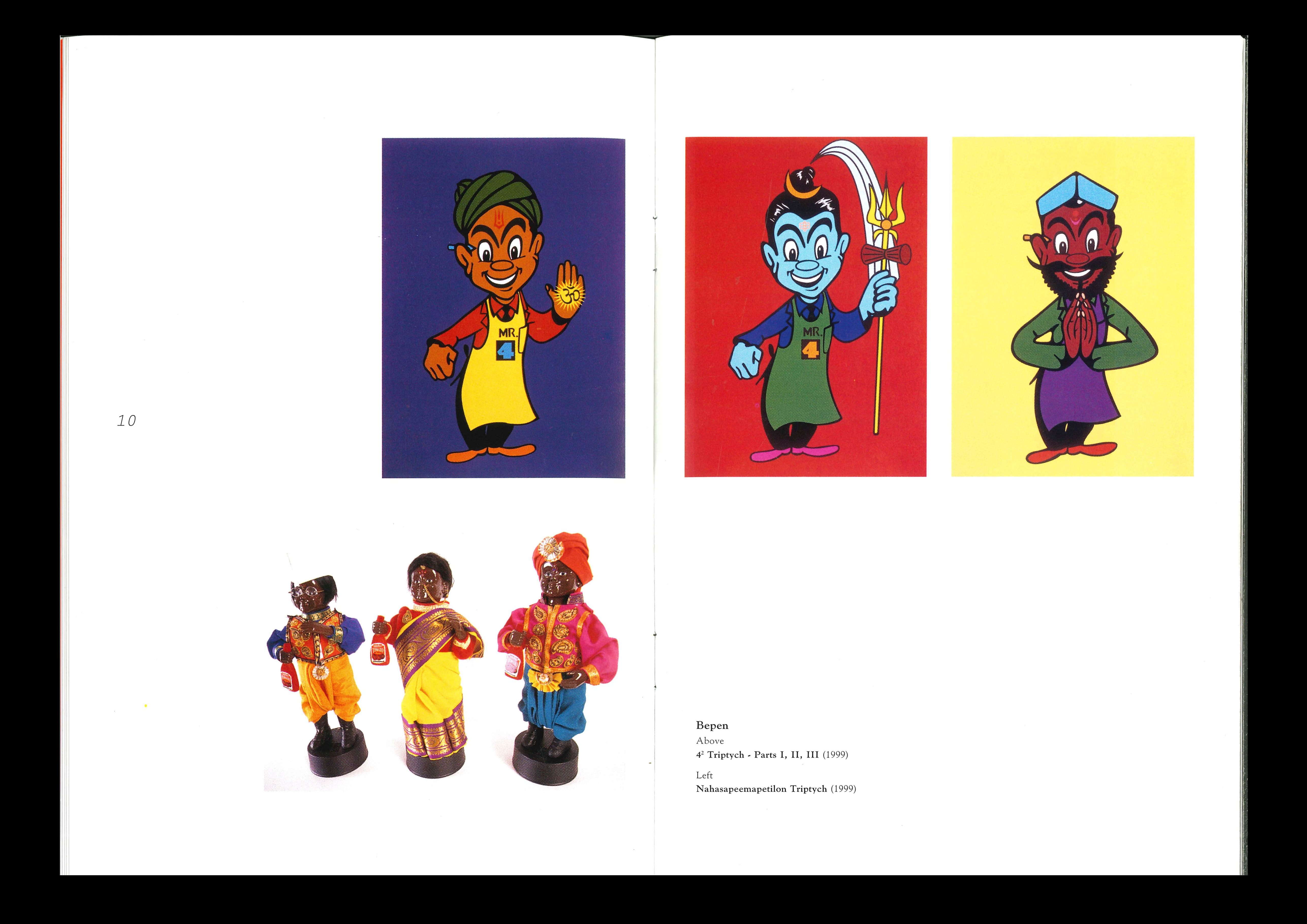
Works by Bepen Bhana in the catalogue for the exhibition I think I know who you are, Lopdell House Gallery, 1999
'Bepen Bhana’s contribution to the 1999 exhibition I think I know who you are alluded to the pathway of many South Asian migrants who come to Aotearoa and start small businesses, much like Bhana’s own family, who owned a dairy in West Auckland. Bhana protests the derogatory stereotype of dairy-owning Indian New Zealanders shown in a Wattie’s television advertisement that aired in the early 1990s, a few years before this work was exhibited.'
Marc Conaco — Designer, illustrator and Satellites archivist
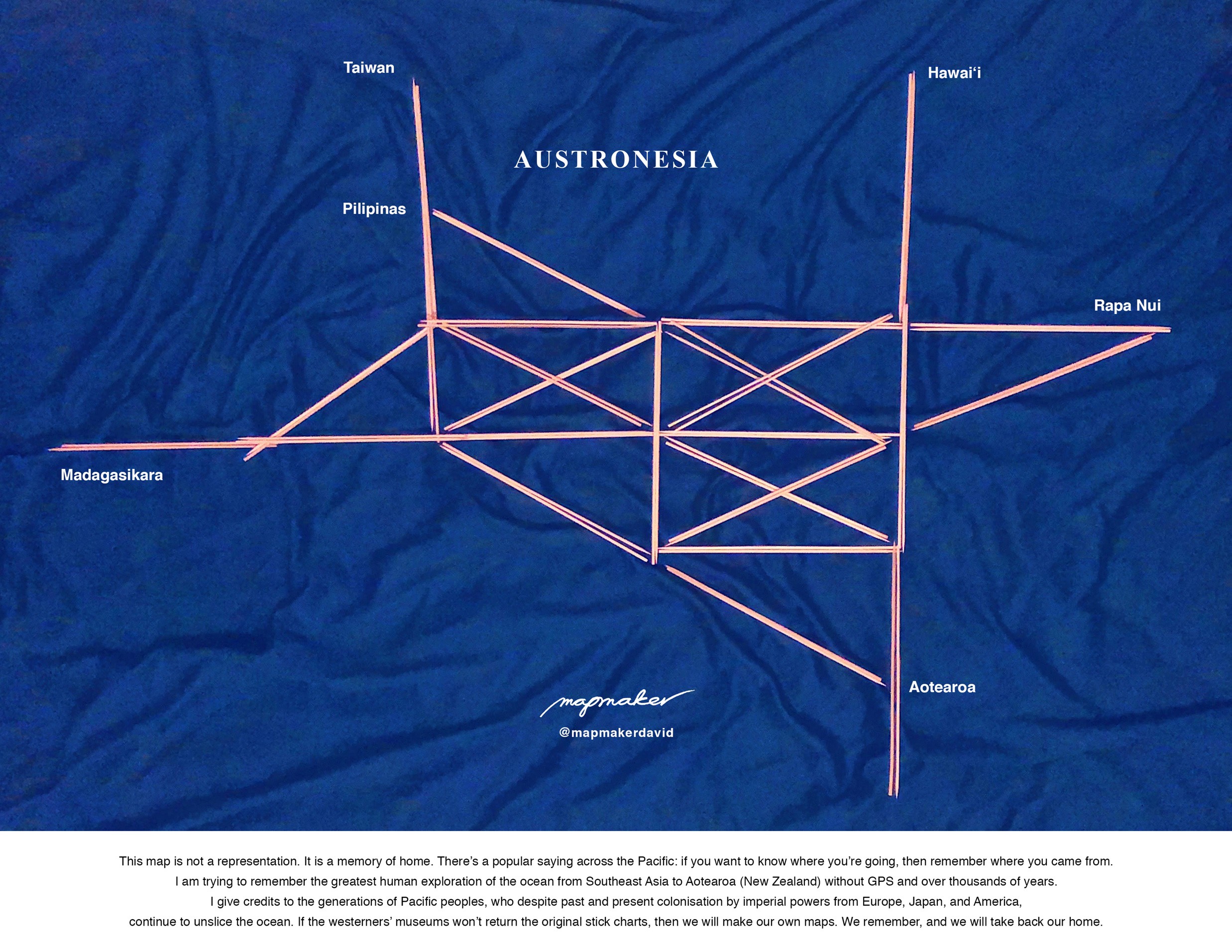
David Garcia, a map of Austronesian connections inspired by the stick charts of Lolelaplap, 2023
'Mapmaker David Garcia created this map, inspired by the stick charts used in Lolelaplap (the Marshall Islands), to introduce Austronesian connections between the sea of islands of the Pacific and Indian Oceans. This map illustrates Austronesian oceanic connections: cultures stretching across Asia and the Pacific that originated from Southeastern Taiwan thousands of years ago. The original stick charts were educational tools for young wayfinders on land before they set out on the ocean. What I like about David’s work is the care and deliberate centring of indigeneity — an impressive feat, especially in his field of mapmaking, which almost always centres Western knowledge and practices.'
Rosabel Tan — Satellites Director
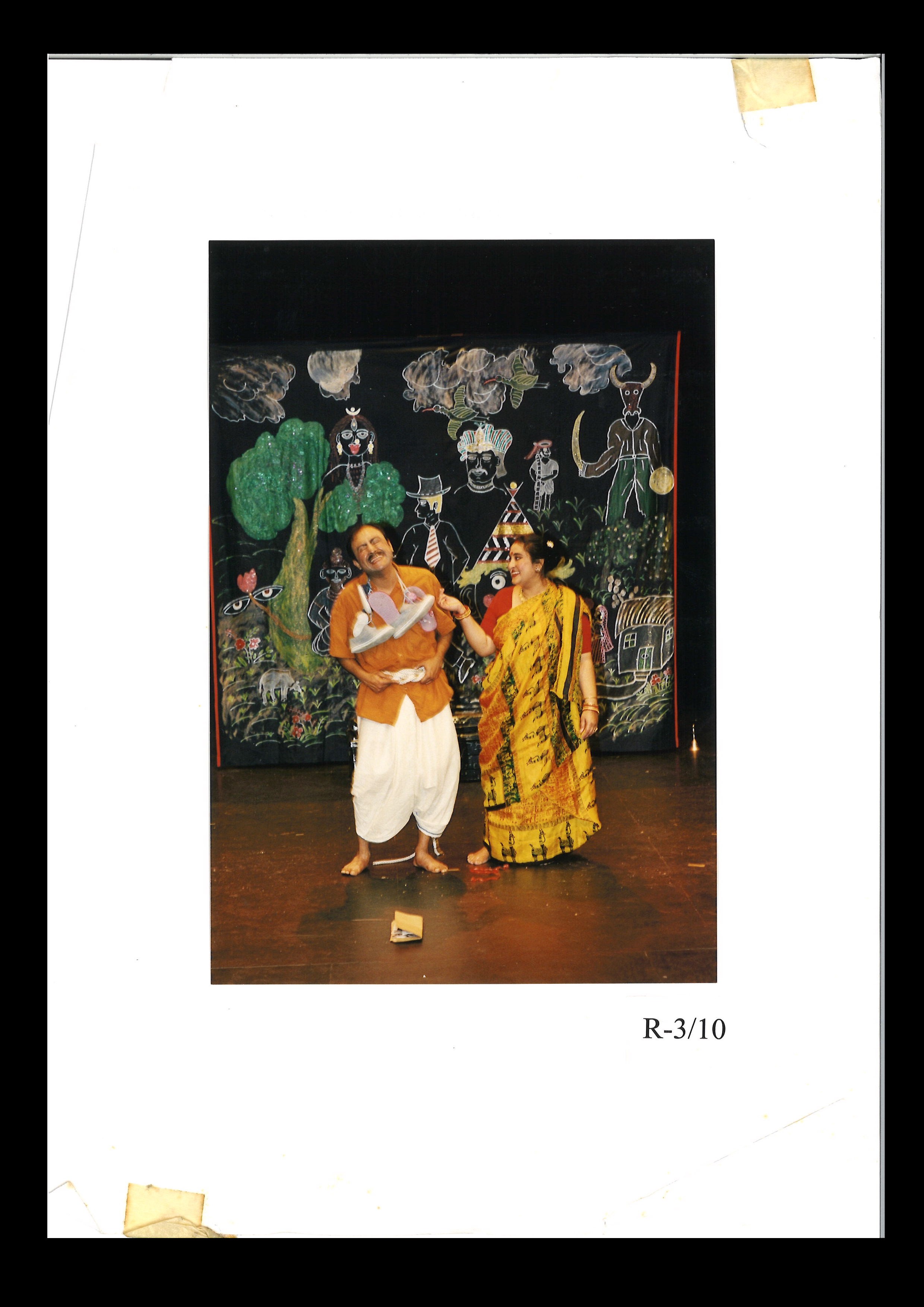
Kinu Kahar-er Thetar (Kinu’s Theatre Company) by Manoj Mitra, staged at Centennial Theatre, Auckland Grammar School, 2001
'Many people are familiar with Prayas Theatre, the largest South Asian theatre company in Aotearoa, but I adore this glimpse into how it was formed. When co-founder Amit Ohdedar moved to Tāmaki Makaurau in 1994, he joined the Probasee Bengalee Association. They started putting on annual productions, and these became so popular that the society decided to start performing in English, to create the opportunity for non-Indian audiences in particular to discover a more expansive vision of Indian culture. This decision to perform in English feels profoundly generous, an open-armed invitation for deeper connection. I also just love seeing a younger Amit performing on stage.
Of this photo, they say: “The large backdrop you see in the photo (all village theatre companies would typically have such generic backdrops as a travelling set), was designed and hand-painted by a very talented local Bengali fellow migrant lady – Mamata Das.”'
Melanie Küng — Librarian and Satellites archivist

Haruhiko Sameshima, 'The shopping mall as a place of contemplation', 1999
'While looking very much of its time, the format and contents of Haru Sameshima’s first photo essay, ‘The Shopping Mall as a Place of Contemplation’, signal the many enduring strands of Haru’s practice. There is an innate irony in the title, coupled with a profound sense of sincerity. Haru’s contemplative eye for the everyday, and a deep knowledge of the histories surrounding photography and image cultures, elicit an expansiveness in his approach, but at the same time a singularity of focus in his questioning of cultural mores.'
Emma Ng — Satellites Editorial Director
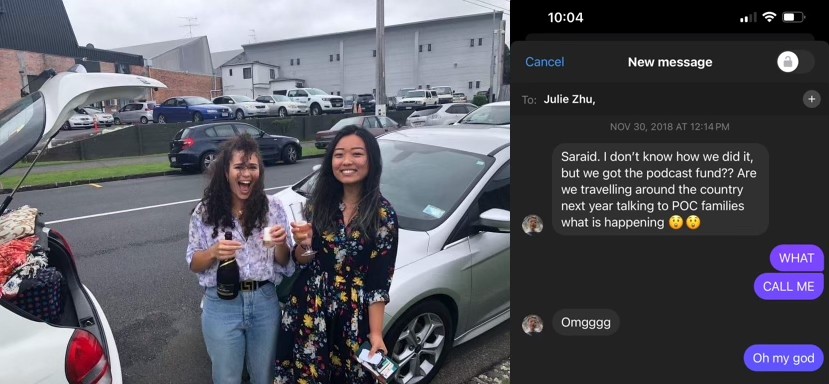
Saraid de Silva and Julie Zhu celebrate their successful proposal, 2018
'Deep in the archive is this moment of pure joy: texts between Julie Zhu and Saraid de Silva after they found out they’d been funded to make the first season of their podcast Conversations with My Immigrant Parents — and a photo of them celebrating together with bubbles out of the car boot. They’ve since produced and presented three seasons for RNZ and I think almost every episode has made me cry, including the one where Julie and Saraid talk to their own parents. Their original proposal for the podcast is also in the archive.'
→ Conversations with My Immigrant Parents in the Satellites archive
JingCheng Zhao — Artist and Satellites archivist
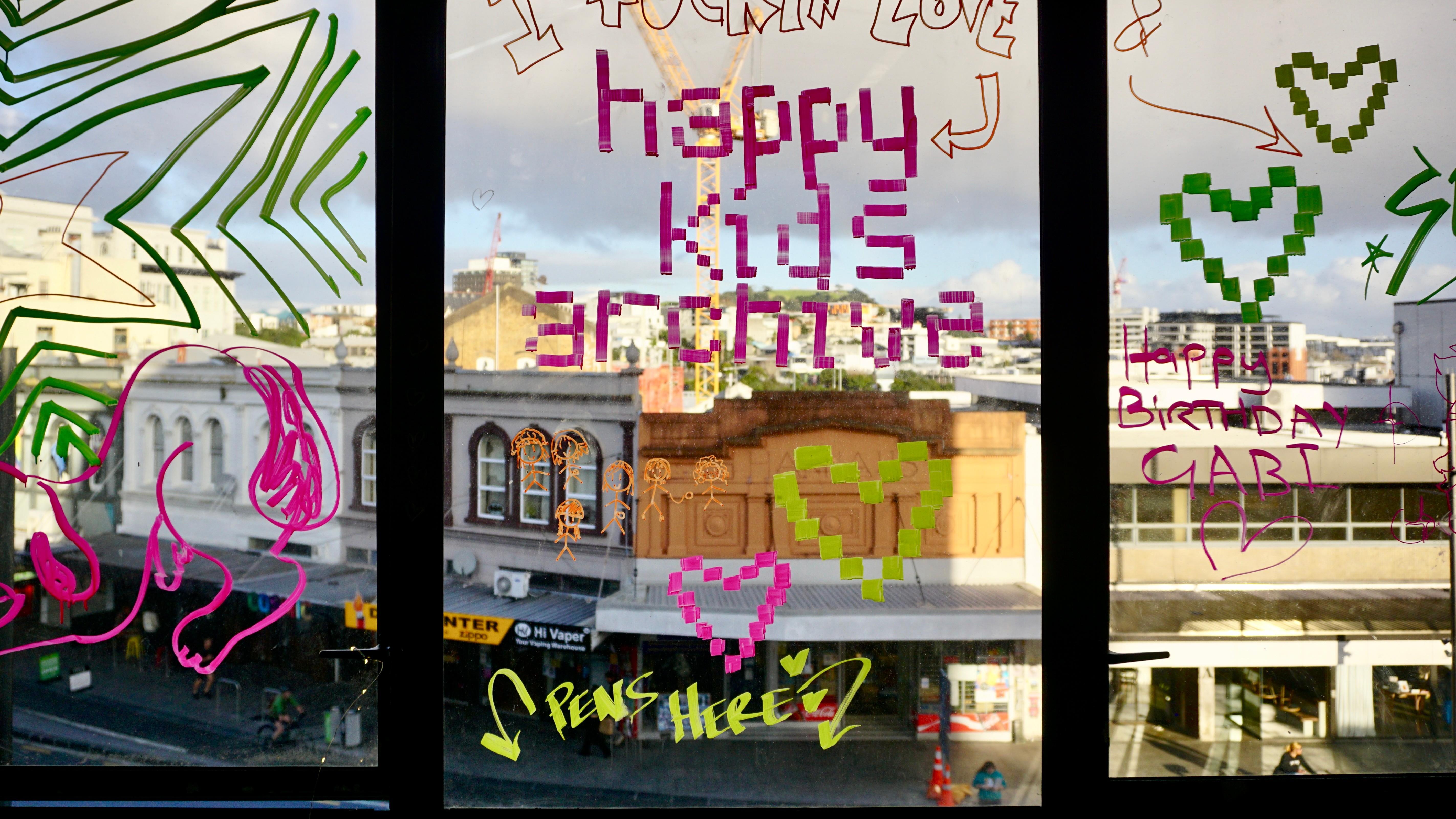
The launch of The Happy Kids Archive, Samoa House Library, 2023
'Preparing for The Happy Kids Archive book launch was a lot of fun. We made a poster wall with over forty laminated A3 posters, featuring the cover image of each artist’s online promotional video. Colourful lights encircled every beam in the room, stickers and keychains designed with THKA logo were stacked on tables, up for grabs. This image captures the beautiful view from Samoa House Library to Karangahape Road before the launch party, in the warm winter sunset, with doodles drawn by artists and friends.'
Jennifer Cheuk — Editor, curator and Satellites archivist
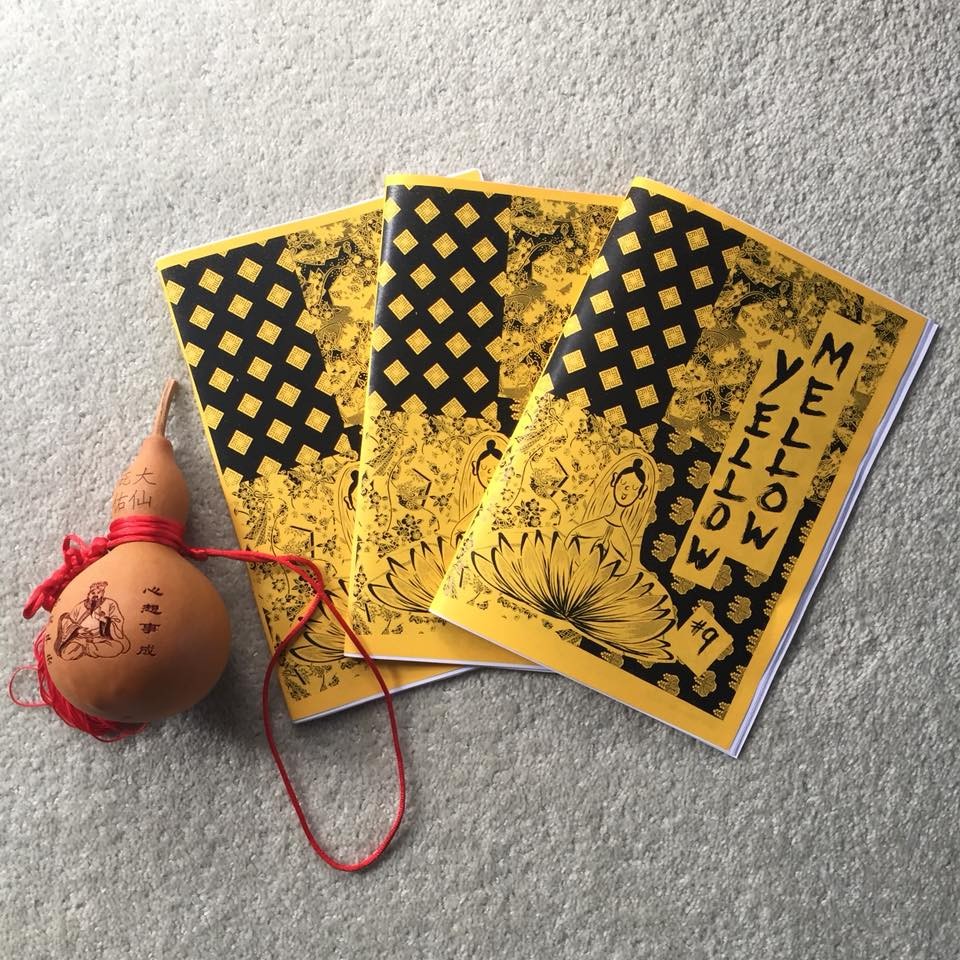
Mellow Yellow issue #9, 2018
Photo by Helen Yeung
'Zines are self-published print publications that have a long history of activism and challenging mainstream media. The heart of zine making lies in the ability of the form to deviate from dominant narratives and provide a space for underrepresented voices. In Tāmaki Makaurau in 2006, Wai Ho established one of the first online and print publication spaces for Asian feminists in Aotearoa to articulate their lived experiences and “to challenge colonialism, racism, sexism and all forms of unjust social hierarchy”: Mellow Yellow. This collaborative zine series and blogsite became a landmark indie publication that inspired many of the other zines and collectives in this archive.'
